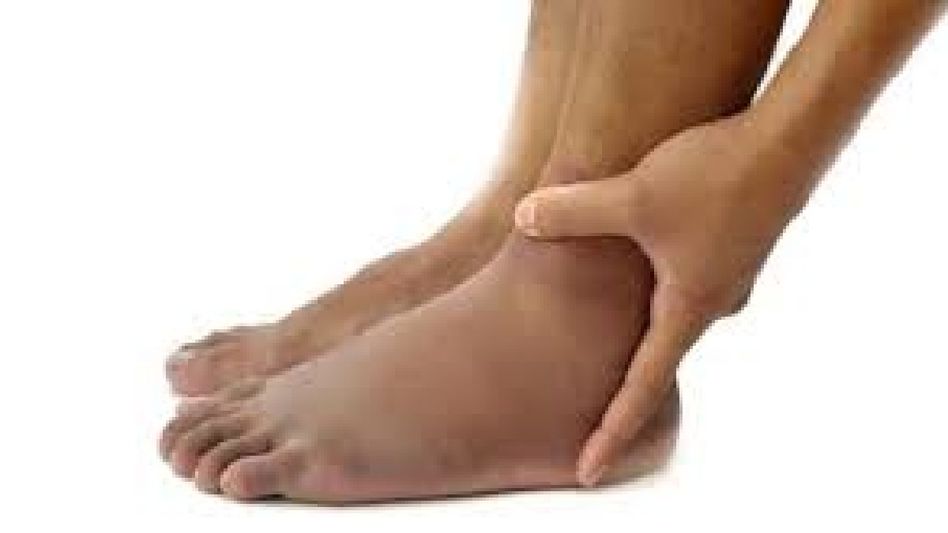Effective Ways to Treat Swollen Feet After Long Hours of Sitting
Swollen feet, or edema, is a common issue that many people face after long periods of sitting. This condition occurs when fluid accumulates in the tissues of the lower extremities, causing discomfort and sometimes pain.

Swollen feet, or edema, is a common issue that many people face after long periods of sitting. This condition occurs when fluid accumulates in the tissues of the lower extremities, causing discomfort and sometimes pain. While it can be a temporary inconvenience, persistent swelling should not be ignored as it can indicate underlying health problems.
Understanding the Causes
Before delving into treatment methods, it’s important to understand the primary causes of foot swelling after prolonged sitting:
Poor Circulation: Sitting for long periods can impair blood flow, causing fluid to pool in the lower extremities.
Gravity: When sitting, gravity pulls fluid down to the legs and feet, especially if feet are not elevated.
Lack of Movement: Immobility prevents the muscles from contracting and helping to pump blood back to the heart.
Medical Conditions: Conditions such as deep vein thrombosis (DVT), heart failure, and kidney disease can also cause swelling.
Immediate Steps to Reduce Swelling
Elevate Your Feet: Elevate your feet above heart level for 20-30 minutes. This helps gravity to assist in reducing the fluid buildup in your feet.
Hydrate: Drinking plenty of water can help flush out excess salt and toxins from your body, which can reduce swelling.
Move Around: Take breaks every hour to stand up and move around. Walking and stretching can stimulate blood circulation.
Compression Socks: Wearing compression socks can help prevent fluid from accumulating in your feet and ankles by providing gentle pressure.
Cool Compress: Applying a cool compress or soaking your feet in cold water can reduce swelling and provide relief.
Long-term Strategies and Lifestyle Changes
Regular Exercise: Incorporate regular exercise into your routine to improve overall circulation. Activities like walking, swimming, and cycling are particularly beneficial.
Healthy Diet: Maintain a diet low in sodium to prevent water retention. Increase your intake of fruits, vegetables, and foods high in potassium like bananas and avocados.
Proper Posture: Ensure your seating arrangement promotes good posture. Use a footrest if necessary to keep your feet elevated slightly.
Weight Management: Maintaining a healthy weight can reduce pressure on your veins and improve circulation.
Compression Garments: For those prone to swelling, wearing compression garments throughout the day can help prevent fluid accumulation.
Home Remedies for Swollen Feet
Epsom Salt Soak: Soaking your feet in warm water mixed with Epsom salt for 15-20 minutes can reduce swelling and soothe discomfort.
Herbal Teas: Drinking herbal teas like dandelion or parsley tea can act as natural diuretics, helping to reduce fluid retention.
Massage: Gently massaging your feet and legs can stimulate blood flow and reduce swelling. Use upward strokes to encourage fluid movement toward the heart.
Magnesium Supplements: Magnesium deficiency can lead to swelling. Consider taking magnesium supplements after consulting with a healthcare provider.
Professional Treatments and When to Seek Help
While home remedies and lifestyle changes can effectively manage mild cases of swollen feet, professional treatment might be necessary for persistent or severe swelling. Consult a healthcare professional if:
Swelling Doesn’t Improve: If the swelling does not improve with home treatment or lifestyle changes.
Pain and Discomfort: If the swelling is accompanied by significant pain or discomfort.
Sudden Onset: If there is a sudden onset of swelling, especially if only one foot is affected.
Other Symptoms: If you experience other symptoms such as shortness of breath, chest pain, or redness and warmth in the swollen area.
A healthcare provider may recommend:
Diuretics: Medications that help reduce fluid buildup in the body.
Physical Therapy: Exercises and treatments to improve circulation and reduce swelling.
Medical Devices: Compression devices or pumps that can help improve blood flow.
Addressing Underlying Conditions: Treatment for underlying conditions such as heart failure, kidney disease, or venous insufficiency.
Swollen feet after long hours of sitting can be uncomfortable, but they are usually manageable with a combination of immediate relief strategies and long-term lifestyle changes. Elevating your feet, staying hydrated, moving regularly, and using compression socks are effective ways to reduce swelling. Incorporating regular exercise, maintaining a healthy diet, and ensuring proper posture can prevent recurrence. However, it is crucial to seek medical attention if swelling persists or is accompanied by other symptoms, as it may indicate a more serious underlying condition. With the right approach, you can alleviate discomfort and maintain healthy, swelling-free feet.
Copyright©2026 Living Media India Limited. For reprint rights: Syndications Today








